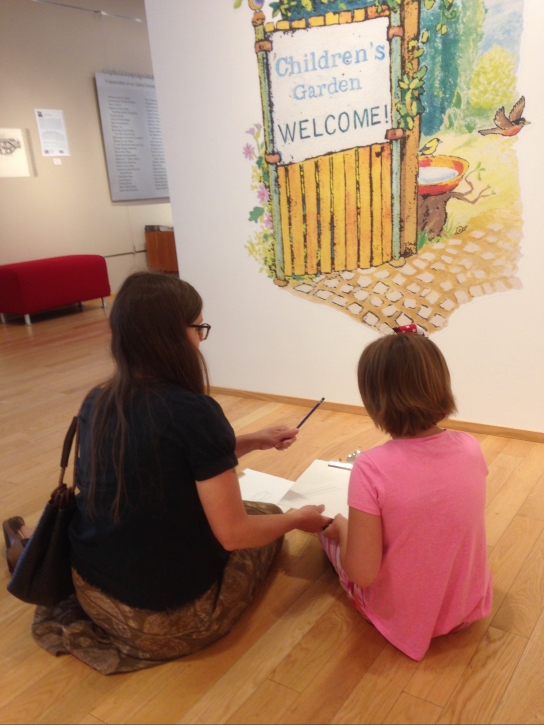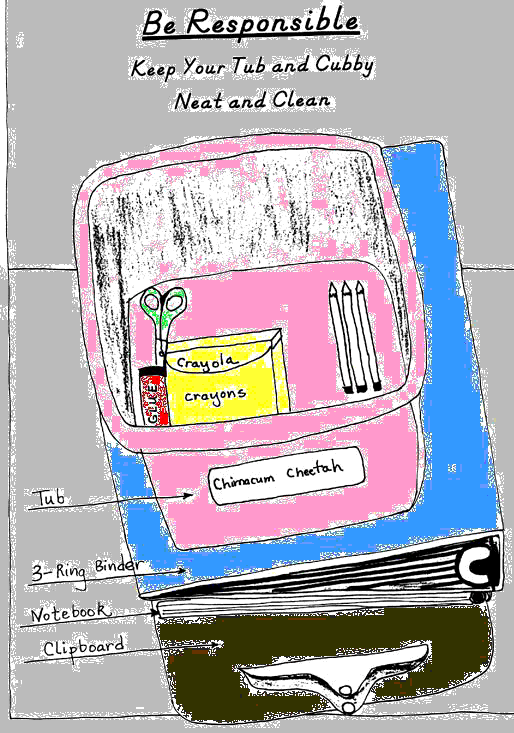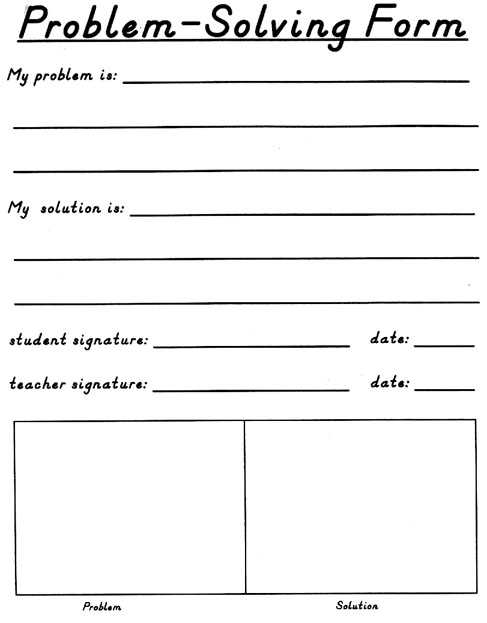
I have been a teacher of children ages 7 to 12 years old in both public and independent elementary learning environments. I have taught both single-grade and multiage classes. Two principles have always been at the heart of all that I have done as a teacher. First, is my believe that education should be student-centered and second, that fostering an enjoyment of learning is probably the most important thing educators can do with their students.
Learning and not teaching has been the focus in my classrooms. This simple statement is filled with implications. If teaching is the focus of a classroom, then control over student academic, social, and behavioral actions becomes the job of the teacher. Management of the details of individual students, of the classroom, of academic progress and pace, and even of recess behavior becomes the primary concern. An information delivery model in which knowledge is passed from the textbook company or state department of education through the teacher to the student would be the major route for knowledge acquisition in a teacher-centered classroom. This type of classroom supports a “culture of silence” as Paulo Freire has observed, a programming of conformity if looked at on a societal scale. It is also, as I see it, a Behaviorist way of managing instruction in which management of learning is reliant on forces external to the child, including reinforcement and an emphasis on consequences administered by the teacher.
In contrast, a learning focused classroom, as I see it, puts the primary emphasis on the process of learning and the use of knowledge. The teacher’s job is then one of helping students acquire learning skills and the practicing of those skills in ways that are useful and meaningful to the student. The teacher does not act as some sort of all-important filter of information determining all of what each student needs to know, but rather becomes more of a guide, setting up learning and practice situations and showing or modeling new ways of acquiring and using information. For instance, in my classrooms I have used many ideas from Gestalt Psychology when helping my students in math. My instruction has been based on a problem-solving model in which I guided my students to find a variety of solutions to various problems, then set up experiences for them to transfer their new skills to similar but different situations. I also used Vygotsky’s concepts of the zone of proximal development, scaffolding, and social interaction in my classrooms. By using peer tutoring and modeling thoughtfully along with my own support of the individual student, children frequently showed tremendous cognitive growth. Thus I believe that the learning environment is not limited to the classroom and to what the teacher can always control but rather is made up of the tools of learning, including social interaction.
In looking at how I came to believe such a classroom is most conducive to student learning, it is important to first visit some of my past classrooms.
In the first 3 years of my teaching career I was learning how to survive each day. My task was to get through the curriculum while still keeping school as enjoyable for the students as possible. Thus I concentrated on orchestrating a classroom full of students, keeping them “on task,” rewarding good academic and social behavior with material and nonmaterial rewards, and including negative consequences for “poor student choices.” Overall students and their parents responded well to this. Part of this orchestration was to present instruction in a variety of teacher-determined ways, including the occasional learning project. I created many “systems” in the classroom for everything from independent reading to small group management. Although I did this with input from students (I’ve been known as a very democratic teacher), I still put an emphasis on my being in control of each and every situation. I believe that nearly every conflict or negative situation could be traced to my overemphasis on teacher control, on being the giver of consequences.
In the 1993-1994 school year I was fortunate enough to get a group of students that would push me and teach me about what they needed and wanted for their education. The student labels ranged from “severely gifted” to “How do you deal with him every day?” As the months passed I found it increasingly harder to always be in control of the students. Projects would work well, whether individual or group, but anything that had even a smattering of more traditional whole group instruction would be met by resistance and/or conflict. Students would even divide themselves into factions, those who sided with the teacher, those who wouldn’t, and a few who would articulate a third or fourth stance. A number of students could not focus on instruction long enough to be able to successfully complete many or most individual learning tasks. For these students I would regularly give them individual instruction immediately after I had given whole class instruction, helping them get successfully started on the practice task. Others would be finished with the practice task at about the same time I completed the whole class instruction. They “got it” right away and began working early even when they were told not to (waiting didn’t make sense to them, and they would usually complete the task with a high degree of accuracy). For some of the students, a great number of the “learning tasks” were just busy work, they already knew how to “do it” successfully. As you can probably tell from this brief description, I was teaching most often to the middle ground (and sometimes to the lower middle). This seemed to work best for me, as most students seemed to stay “on task.” But I had to ask myself, “Am I really meeting the needs of all my students?”
After having survived that year, I reflected quite a bit on my beliefs about teaching and learning. I came to realize that children are complex and that they need to have some control over what and when they learn, that they are, and need to be, an active participant in the learning process. It finally occurred to me that I had been keeping the focus of my classroom on myself, it was a teacher-centered environment and that in order for students to really learn and to enjoy school, I had to refocus on the children, to make my classroom a child-centered one.
At about this time I discovered the ideas surrounding multiage educational practices. For me the two mixed quite well. My needs to change the underlying beliefs and structure of my classroom were a near perfect match with the beliefs and structure of multiage educational environments.
In addition to “student-centeredness,” I also believe that school should be enjoyable. I realize that not all learning tasks are going to be viewed as fun for all students, but that if school in general is considered fun, then learning is fun and the motivation to learn more is enhanced. I believe that engendering a love of learning is probably one of the most important things I can help elementary age children achieve. With that, every other learning task comes relatively easily to a student. As John Dewey stated in Democracy and Education, “Study of mental life has made evident the fundamental worth of native tendencies to explore, to manipulate tools and materials, to construct, to give expression to joyous emotion, etc. When exercises which are promoted by these instincts are a part of the regular school program, the whole pupil is engaged, the artificial gap between life in school and out is reduced, motives are afforded for attention to a large variety of materials and processes distinctly educative in effect play and work correspond, point for point, with the traits of the initial stage of knowing” (p. 195)
As a result of my classroom being both student-centered and a place where learning is enjoyable, the educational opportunities I gave my students were varied. Learners and the learning process are very complex. I believe that there is no one formula for teaching that fits all situations or all students. For this reason I believe that a variety of approaches thoughtfully geared to both the content to be learned and individual students is the best way to structure a learning program. This matches Howard Gardner’s Multiple Intelligences Theory, there are many different ways knowledge can be gained and learning can be assessed. Hands on learning activities will work well with many students and with a number of content areas. Research projects jig-sawed among the class members facilitate learning best for some students and some subject areas. A discovery approach in which the tools for a learning task are given to the students, a simple question is asked, and the procedure is left up to the students to discover works well in other situations and with some students. Again, variety of learning opportunities allows for the most number of children to both enjoy learning and, if choice is incorporated into the activity, to give children some control over their education.
I believe that structuring classroom management to allow for a wide diversity of children and for shared student control of the classroom environment is at least equally important as academic goals. The degree to which a classroom is student-centered or teacher-centered shows up in its management structure. During parts of each day I had students take over various management tasks. Students managed the opening portion of each day (attendance, reading the schedule, discussing the weather forecast). Students also ran a discussion/transition time in which we discussed the various books we were reading. These are things in which I could monitor but that didn’t need to be done by the teacher. Students in my classrooms also had the privilege of choosing their seat. It was not uncommon for a child to be seated at four or more different places in the classroom during the day. They were given the responsibility to choose a place where they could best learn and where they were most comfortable. What a difference from when I assigned seats and decided whom would sit where based on my needs and my perception of each student’s needs. By giving students some control over their school lives, I supported a belief within the students that they, and not some external force, have control of their behavior and their learning. Also that through their own effort they can achieve success. This matches the idea from Attribution Theory that learning is acquired through constructive effort.
As you can see, the two principals of student-centeredness and enjoyment of the learning process underlied all aspects of my classrooms and are two cornerstones of my philosophy of teaching.
Appendix – Multiage Education
The term “developmentally appropriate” is used a lot by multiage educators. The idea, from the work by Piaget, that certain educational practices are appropriate for children of certain age spans but not for those of different age spans, allows the educator to design lessons that match the individual child. This becomes important in a classroom of children of diverse ages. The interesting thing about Piaget’s developmental levels and multiage education is how the idea is used to determine the age spans appropriate to be placed in a single classroom, and how multiage teachers use the diversity to help children transfer from one cognitive level to another. Multiage programs are most often considered “primary” or “intermediate,” roughly matching Piaget’s Concrete Operational Level, divided in two. This recognizes that some children transition from one level to another at different times and that there is a substantial qualitative difference between cognition at the Preoperational Level and the Formal Operational Level, the levels bordering the Concrete Operational Level. The transition from one developmental level to another is supported through peer interaction and modeling and takes into account the four factors that allow movement from stage to stage, maturation, experience, social interaction, and equilibration. The heavy use of peer modeling by multiage educators is supported by Albert Bandura’s Social-Cognitive Learning Theory. By using these “live models,” the students in a multiage classroom learn vicariously through the success of the model. In this way instruction is enhanced and learning is engendered through more than simple reliance on the teacher as model.
The following is from a brochure I produced that explained to parents what underlying beliefs I have and some of the general methods I used in the classroom.
A multiage educational program is a union of an organizational structure and unique combinations of teaching and learning strategies. The way learning occurs is made possible by the multiple age structure.
Why Multiage?
- Allows for flexibility in the grouping of children according to need, ability, or interest; not just by age.
- Problems associated with a yearly transition from one grade to another can be overcome. The teacher has a nucleus of children; trained in the details of the class organization who keep it going while newcomers absorb it.
- As the student-teacher-parent relationship develops over a longer period of time, students will receive greater support for their success in school.
- A more natural learning situation is established. Children work at their own pace. Their program is not geared to the work of a single year but can be adjusted over two or more years.
- Benefits come to the older children from the quality of leadership and responsibility they develop.
- Younger children are stimulated intellectually by older children.
- Children have a broader social experience with increased opportunities to lead and to follow, to collaborate and to make stable peer relationships.
It is my goal to use instructional strategies that:
- Expand the teacher’s role to include that of a facilitator as well as a source of knowledge.
- Produce cooperation.
- Allow students to learn from each other through peer tutoring.
- Give students responsibility and independence in both learning and behavior.
- Build understanding of action-consequence relationship.
- Provide choice to students in different areas of learning that will reflect learning-style differences.
- Allow continuous learning through the use of learning centers, group instruction, projects, and individual pacing.
- Involve parents in classroom activities.
- Encourage student responsibility and ownership of the learning environment.
- Teach goal setting from an early age.
- Build leadership skills in all students.
Note: The information on this page has developed over a number of years beginning as I was defining a shift in my own teaching practices during the spring of 1995. I have revised it many times since, its latest revision was to meet the needs of this blog.
REFERENCES:
Ballantyne, Paul F. (2006). Piaget’s Stage Theory (online) Available: http://www.igs.net/~pballan/Piaget(Stages).htm
Dewey, John (1966). Democracy and Education. New York: Free Press.
Freire, Paulo (1970). Pedagogy of the Oppressed. New York: Seabury Press.
Ginn Wanda Y. (1995). JEAN PIAGET – INTELLECTUAL DEVELOPMENT (online) Available: http://www.sk.com.br/sk-piage.html
Gredler, Margaret (1997). Learning and Instruction: Theory Into Practice. New Jersey: Prentice-Hall, Inc.
Kearsley, Greg (2013). Social Development Theory (L. Vygotsky) (online) Available: http://www.instructionaldesign.org/theories/social-development.html
 and that each student’s pace is not always constant. Children can at times learn quickly while at other times they will learn more slowly, similar to the physical growth spurts that occur during a student’s childhood. This varied pace can also fluctuate between subject areas as well as with passions for various subjects or areas of learning. While a student may be rapidly progressing in an area such as math during the first part of a school year, they may equally as likely show a relatively stagnate pace in reading comprehension during that same period of time, only to reverse this during a latter part of the year or during a subsequent year. This is one of the reasons many progressive schools use a multiage structure* throughout their program, it more easily supports students as they go through these natural fluctuations in learning pace and passions. Multiage educators further believe that the best way to support children, to best meet the students’ needs as they each follow their own academic growth spurts, is for assessment to be student- small group- and class-specific. To do this schools must treat teachers as professionals and rely on them create and use meaningful assessment strategies and materials – all guided by comprehensive curriculum maps, benchmarks, and of course the students themselves.
and that each student’s pace is not always constant. Children can at times learn quickly while at other times they will learn more slowly, similar to the physical growth spurts that occur during a student’s childhood. This varied pace can also fluctuate between subject areas as well as with passions for various subjects or areas of learning. While a student may be rapidly progressing in an area such as math during the first part of a school year, they may equally as likely show a relatively stagnate pace in reading comprehension during that same period of time, only to reverse this during a latter part of the year or during a subsequent year. This is one of the reasons many progressive schools use a multiage structure* throughout their program, it more easily supports students as they go through these natural fluctuations in learning pace and passions. Multiage educators further believe that the best way to support children, to best meet the students’ needs as they each follow their own academic growth spurts, is for assessment to be student- small group- and class-specific. To do this schools must treat teachers as professionals and rely on them create and use meaningful assessment strategies and materials – all guided by comprehensive curriculum maps, benchmarks, and of course the students themselves.








